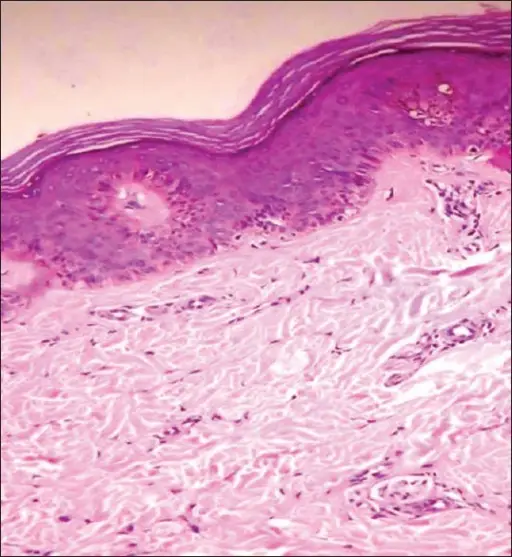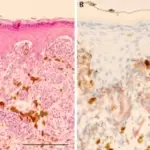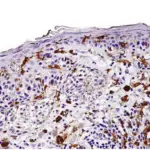Halo nevus is a skin lesion or papule surrounded by a white ring aka sutton’s nevus.
What is the Pathology of Halo Nevus?
The pathology of halo nevus is:
-Etiology: The cause of halo nevus is not clearly stated but it is believed to have been caused by an autoimmune response against the melanocytes.
-Genes involved: HLA-DBR1.
-Pathogenesis: The sequence of events that lead to halo nevus starts first by the presence of a pink papule which later the immune system recognizes as foreign and is attacked by the defense system of the body hence the presence of the white appearance.
-Morphology: The morphology associated with halo nevus shows a region of depigmentation surrounding the nevus.
-Histology: The histology associated with halo nevus shows papillary dermis is infiltrated by the dense lymphoid infiltrates.
How does Halo Nevus Present?
Patients with halo nevus typically are of both gender with an average age of 15 years.
The symptoms, features, and clinical findings associated with halo nevus include uniform color, evenly shaped with hypopigmentation, with clear boundaries. The central nevus is pink, or brown.
How is Halo Nevus Diagnosed?
The halo nevus is diagnosed through physical examination, shave biopsy, and punch biopsy.
How is Halo Nevus Treated?
The halo nevus is treated by application of sunscreen if that is the cause but in general, it does not need any treatment.
What is the Prognosis of Halo Nevus?
The prognosis of halo nevus is good since in most cases all are benign.



